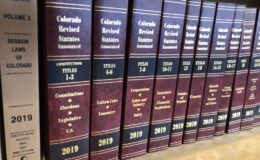Written by Thomas Peden – Guest Blogger
“Climate change has lengthened the states fire season. Climate change is essentially keeping our fuels drier longer. These grasses that were burning, they’ve been baking all fall and all winter.”
Jennifer Balch – Director of Earth Lab. University of Colorado.
Attempting to link CO2 global warming, climate change, she and other alarmists are now blaming the grass flammability on the warm dry conditions from July through November.
After grass goes to seed, the grass stops producing, so basically the grass stops growing and producing oxygen. When grass is properly grazed, the natural cycle of growing to produce seeds is extended by weeks if not months. Dry grass is very flammable – that is why it is used by some to get a campfire started. Just a few hours of dry weather is all that is needed for the dry grass to become highly flammable. The warm dry conditions in the Boulder area from July through November, a normal occurrence for the area, are irrelevant.
The fact is within hours of a snow, dead grass becomes flammable, especially if there have been drying winds. Grass fires naturally burn hot, fast and spread quickly even over patches of snow. High winds are common along the front range as is the dry fall weather.
The climate change, global alarmists, fail to read history, and fail to comprehend that these current conditions are not unusual for Colorado. What in my opinion is sad is the fact that these fear mongers are using this sad event, the Marshall Grass Fire to further their insane agenda.
A major contributor to the grass fire in the area is the poor management of the open space by allowing invasive grasses to propagate. In this area, the main offender is cheatgrass. Cheatgrass expansion has dramatically changed fire regimes and plant communities over vast areas of the rangelands by creating an environment where fires are easily ignited, spread rapidly, cover large areas, and can occur frequently. The best solution to this widespread problem in the rangeland is practicable, logical managed grazing, which will not only help to control cheatgrass but will allow the reestablishment of the natural native grasses, forbs and shrubs. If proper grazing is used, the land managers would not need to use chemicals to control weeds and invasive plants. Actually the managers of the land could generate extra income by leasing the grazing rights. We can not control the weather or the winds, but we can control the fuel for the wildfires.
It is also very disingenuous for the scare & fear mongers to say “Climate change has lengthened the state fire season.” If you follow the money, you will find that the climate change, global warming cult uses the natural cyclic climate change to attract more funding. Certainly blaming fires on a climate crisis attracts more money than if they were to tell the truth and blame this fire on the invasive grasses and human ignitions. Climate change groupthink also ignores natural climate change and the fact that currently we are in a La Nina year. It is well understood that depending on how colder Pacific surface water sets up during a La Nina, atmospheric currents can carry higher or lower amounts of moisture to different regions. It is normal for the Front Range area, including the Boulder area, to be drier and to experience high winds during a La Nina.
Alarmists weaponized the dry conditions as solely due to global warming drought. They ignored the drying and warming effects of the natural Chinook wind that are common. Chinooks are known as “snow eaters” because as the winds pass over the mountains they are forced upwards and precipitate most of their moisture. When the wind descends from the Rockies, the temperatures rise due to pressure removing the snow and moisture from the surface.
Science does not show a connection between the Marshall Fire and Climate Change.



Leave a Comment